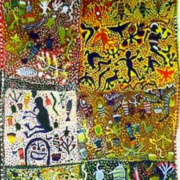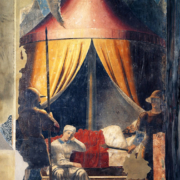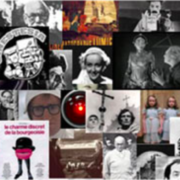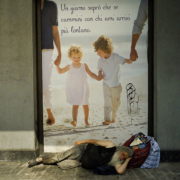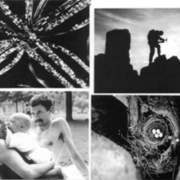A quick guide to the papers in this issue
Paper Title: Genius Loci: A function of a group’s affective regulation
Author: Claudio Neri (Italy)
Summary
This paper builds a picture of a characteristic that is shared by both places and groups. Each place and each group has a “Genius Loci” which can be compared to a deity whose constant presence gives character, coherence and ‘spirit’ to that place or group. In nature… <<The Genius Loci tries to maintain a congenial balance between water, wind, vegetation, buildings etc. Conversely, it gets irritated if the characteristics and harmony of a specific place are changed by actions or gestures which are outside its nature>>.
In groups the genius loci works in harmony with the group leader, but is not the group leader. The group’s identity is strengthened by the Genius Loci and experiencing and participants are assisted to voice affect by the presence of the Genius Loci. This notion helps to free the leader from the unrealistic idea that he or she is the only person who can help the group to function well.
In this paper, Neri enlists the help of ancient Roman tales in successfully drawing together concepts that are seldom successfully related: those of group, individual, place, nature and community. Such a powerful linking of individual, group and nature should help to reconcile a world that is currently alienated from nature.
Paper Title: Facilitating change: Boundaries and the human-nature dialectic
Author: Marianne Spitzform (USA)
Summary
This paper develops the view that human beings lose their ability to relate to nature because of an impermeability of boundaries. Predatory animals such as Grizzly Bears can be considered to be groups with which human beings could potentially relate at a psychological level, rather than attack both physically and psychologically. Spitzform asserts that concepts from group psychoanalysis are very helpful in developing our understanding of human relationships with nature and hence working with others to help them build better relationships with nature. In particular, the concepts of identification, containment, anxiety regulation and imagination are useful.
The boundaries around “self” and “group” need to be extended to include “nature” in our personal and collective sphere of concern, and to do this requires a sound understanding of the psychological needs of those with whom we work. The goal of the paper is summarized well by the concluding sentence: <<When the sense of self includes the capacity to identify with non-human others, contain and modulate anxiety, and make creative use of the imagination, we will be better able to permeably receive from the natural world as well as have an impact upon it>>.
Paper Title: Experiencing interactions: What makes up the bonds of relations with the world?
Author: Johanna Haskell (USA)
Summary
This paper explores the human condition as being an integral part of the network of humanity and nature. The author challenges the idea that people exist as distinct individuals and suggests instead that there is a continual inter-linking of people with the environment in which they live. A person can be seen as similar to the eye of a hurricane – apparently empty but at the centre of a great deal of activity. Body, mind and world are in constant interplay so that conventional ideas of experiencing and learning are no longer relevant. Experiencing-learning-interacting are one.
In what Haskell describes as the ‘enactive paradigm’, students of ‘outdoor education’ are encouraged to notice the growth of connectedness between themselves, others, the world around them and their own experience. In this way, students build a powerful and durable lived experience of connectedness with others and with nature.
Paper Title: Psyche and the environment
Author: Anne Noonan (Australia)
Summary
This paper offers a respectful criticism of the negative effects of Judeo-Christian world views and the views of traditional psychoanalysis. For instance, Noonan observes <<…as long as the Western language structure continues to describe matter as lifeless and inexhaustible, as opposed to traditional languages structures which recognises animation, fragility and the finite, progress in working against man-made environmental disasters will be limited>>.
The paper integrates Jungian views with more recent ideas that acknowledge that the World is a single finite living system and that individuals (mind and body) as well as groups are all a part of that system. Widening the view of group to include society and political systems, the author describes the way in which individual politicians and political systems as a whole can easily exacerbate the separation between people and environment and hence be destructive to society and to nature.
Paper Title: A sense of place: How space and mind combine to create place
Author: Chris Loynes (England)
Summary
In England “Development training” is a well known discipline that combines the use of adventure-based activities and group process to create change in teams, organizations and individuals. A high proportion of development training occurs in the outdoors and it is in this context that Loynes takes a critical look at how the outdoors is viewed by development trainers.
The paper begins with an exploration of the notion of ‘place’, and includes a wide range of considerations such as the relatedness of place and body, sensuality, community, internal psychological worlds and spirituality. The paper provides a deep and perceptive outline of how small groups of people under expert leadership can undertake active adventurous programs in the natural environment and provide benefit to people-environment system.
Paper Title: Discovering time and place
Author: James Telfer (Australia)
Summary
Displacement is the theme of this paper. Telfer builds a detailed picture of the life of a person whose inner world is damaged by dislocation in time and space – she needed therapy to help her become ‘located’ rather than lost. The application of principles from psychoanalysis and attachment theory builds a strong and moving account of how individuals, families, societies and groups become displaced – that is alienated from a sense of place and disconnected from the history of what would otherwise be their place.
The power of Telfer’s message can probably best be summarized by quoting words from his paper: <<There is no real person without their place, just as there is no such thing as a baby without their mother>>. The role of the natural world then becomes much more significant than it is usually considered to be. The corollary of Telfer’s view is that we as humans must have our own special physical places in order to survive as individuals, as groups and as societies. This argument is strongly supported by the spiritual beliefs of Australian Aborigin.

